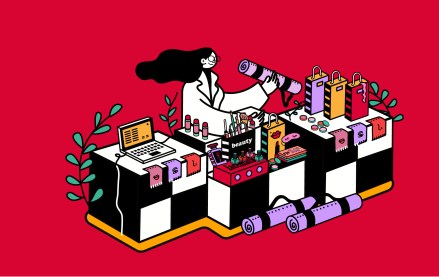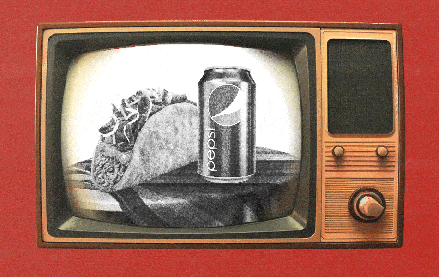Header bidding, just the beginning. Where are we going in 2016?

by Chris Karl, CSO Sonobi @chrisjkarl
Digital marketing is no place for those who are change averse. Over the last decade the demand and supply sides have both driven a vast array of new technologies — ad exchanges, DSPs & SSPs, private marketplaces, and more — in order to create and monetize the perfect combination of audience and placement. This “evolution of audience buying,” has catalyzed a $10 billion programmatic marketplace.

Programmatic buying based on header tagging is the industry’s latest innovation. A supply-led technology, it has changed how we buy as an industry. By some estimates, as much as 20 percent of the web’s premium ad space is now being sold via header tagging. Intuitively, we know it’s a big deal, a new peak to climb; we can sense it is a big step towards resolving Wanamaker’s dilemma (in which 50% of our budget is being wasted) and many other marketing challenges.
But the programmatic markets we have created are complicated and far from perfect. The interoperability of these connected platforms can help advertisers find specific audiences (and can help publishers monetize them), but there are downsides. Think about it: if an advertiser is looking for a specific audience, and a publisher knows they have this audience, multiple intermediary technologies and marketplaces are unnecessary and inefficient.
But the problem goes deeper than that. Header tagging (and the real-time bidding it enables) can be great for finding the right consumers . But RTB markets don’t lend themselves to guaranteed buys, which means we haven’t solved some of the initial supply side problems about sales channel conflict. This is troublesome for publishers and for advertisers.
Further, RTB does not offer advertisers enough control over the quality of the placement itself. As anyone who has worked on more than one client knows, the quality of any given placement can vary tremendously based on your brand and specific goals.
Is share of voice the important metric for you? How about understanding the stickiness of the page you’re on? Maybe you are more interested in how many ads besides your own are on the page. RTB as it exists today simply does not offer the ability to be highly and accurately selective when it comes to ensuring the quality variables that you care about most.
In the end, then, because it is an indirect revenue source and does not adequately handle guaranteed buys or precise placement quality controls, the RTB transaction is definitively not of the caliber of a direct guaranteed deal.
Metaphorically, it leaves an advertiser feeling a little like the last person hitting the lunch buffet – you know roughly what to expect, but you can’t be sure exactly what you’ll be getting, or how much of it will be left when you get to the front. I promise you that the world’s largest advertisers don’t want to eat the soggy veggie wrap and last scoop of potato salad. They expect guaranteed outcomes.
A direct and guaranteed marketplace driven by audience (customer data), media experience (high impact creatives, session depth, viewability), and content (blue chip premium publishers) will drive better business outcomes for brands and relevant advertising as a service for the end user.
Header tagging is phase one of that future. Done right, header tagging starts to change the dynamic of the page itself, including the ad server without having to replace it. It can reveal information about both the audience and the page that allows us to understand and control our placements at a whole new level, bypassing traditional programmatic markets and drawing the most direct possible lines between an advertiser and their desired audience.
When marketplaces evolve to direct models, growth will only accelerate. This is great news for advertisers and publishers, the two most important constituents of the media marketplace. This is where we are headed in 2016.
Headers have promise, but the mechanics must evolve beyond simple header bidding to disclose the important audience and page quality information advertisers want. This will allow advertisers to bypass existing exchanges (and their limitations), connect directly with publishers and more effective use their advertising dollars. That way, advertisers will be able to make guaranteed buys against their own unique audience and quality metrics. And publishers can rest easy knowing that they’re making the most money off their inventory, and that their sales are guaranteed.
So, if you are serious about solving Wanamaker’s dilemma – if you want to make sure that all your ad dollars are optimally placed – what you need to do is simple: Guarantee your buys not against impressions, but against a desired audience, and a desired set of quality criteria.
Easier said than done, you say? Not anymore.
More from Digiday

Sephora pone a prueba una nueva estrategia de merchandising para el cuidado corporal
Suscríbete al newsletter de Digiday en Español aquí para recibir las últimas noticias sobre el sector de marcas y la industria del marketing. Esta historia fue reportada por primera vez en Glossy, una publicación hermana de Digiday en Español. Sephora está poniendo a prueba un nuevo programa de merchandising en las tiendas, aprovechando el auge del […]

PepsiCo patrocina su primer show en colaboración con Hulu dedicado a promover la cocina latina
Suscríbete al newsletter de Digiday en Español aquí para recibir las últimas noticias sobre el sector de marcas y la industria del marketing. Pepsi tiene claro que para conquistar al consumidor latino hay que ganarse primero su paladar, por eso está estrenando su primera serie en streaming, Talking Sabor, un programa que se podrá ver […]

With Firefly Image 3, Adobe aims to integrate more AI tools for various apps
New tools let people make images in seconds, create image backgrounds, replacing parts of an image and use reference images to create with AI.





